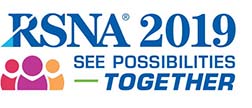

ParticipantsRashi I. Mehta, MD, Morgantown, WV (Presenter) Nothing to Disclose
Ali Rezai, MD, Morgantown, WV (Abstract Co-Author) Board of Directors, Autonomic Technologies; Board of Directors, Sollis; Board of Directors, Neurotechnology Innovation Translator; Stockholder, Autonomic Technologies; Stockholder, Sollis; Stockholder, Neurotechnology Innovation Translator
Marc Haut, PhD, Morgantown, WV (Abstract Co-Author) Nothing to Disclose
Umer Najib, Morgantown, WV (Abstract Co-Author) Nothing to Disclose
Manish Ranjan, MD, Morgantown, WV (Abstract Co-Author) Nothing to Disclose
Gary D. Marano, MD, Morgantown, WV (Abstract Co-Author) Nothing to Disclose
Mor Dayan, Dallas, TX (Abstract Co-Author) Insightec Ltd
Nathaniel Kelm, Miami, FL (Abstract Co-Author) Insightec Ltd
Bob Hou, PhD, Morgantown, WV (Abstract Co-Author) Nothing to Disclose
Peng Wang, Morgantown, WV (Abstract Co-Author) Nothing to Disclose
Jeffrey S. Carpenter, MD, Morgantown, WV (Abstract Co-Author) Nothing to Disclose
rashi.mehta@hsc.wvu.edu
PURPOSEAlzheimer's disease (AD) is the most common cause of dementia and has no effective treatment. MR-guided low intensity focused US (LIFU) has been shown to reversibly open the blood-brain barrier (BBB), reduce amyloid-▀ plaque burden, improve memory and allow for targeted drug and stem-cell delivery in animals. As a proof of concept, a recent phase I clinical trial demonstrated safe and temporary opening of the BBB with LIFU in the dorsolateral prefrontal cortex in 5 patients with AD. We report initial results and MRI findings of a phase II trial, which is currently in progress to assess safety and efficacy of BBB opening within the hippocampus and entorhinal cortex at sites of abnormal amyloid burden in patients with early AD.
METHOD AND MATERIALSInclusion criteria of this phase II Insightec-sponsored and FDA/IRB-approved trial includes early stage AD and amyloid-PET positivity. Three successive treatments were administered to two female patients (aged 61 and 73 years) at two week intervals. Treatments consisted of stereotactic headframe placement followed by MR-guided LIFU sonication with 220kHz using the ExAblate Neuro Type 2 system and concomitant IV microbubble (Definity«) bolus injection. Three sonication targets in the right (first patient) and left (second patient) hippocampus/entorhinal cortex, were targeted based on anatomy and amyloid burden.
RESULTSPost-sonication brain MRI revealed immediate IV contrast enhancement within the targeted hippocampus/entorhinal cortex and adjacent subcortical regions (figure), indicating BBB opening focally within treated areas. Resolution of contrast enhancement, indicating BBB closure, was observed at each parenchymal target within 24 hours. There were no clinical or radiologic treatment-related adverse effects. A distinctive perivascular pattern of enhancement and FLAIR hyperintensity was consistently observed.
CONCLUSIONThis report of the first two patients to undergo MR-guided LIFU sonication of the hippocampus/entorhinal cortex for AD demonstrates safe, precise, reversible, and reproducible BBB opening in the hippocampus/entorhinal cortex, and a distinctive postsonication MR imaging pattern.
CLINICAL RELEVANCE/APPLICATIONPreliminary results of the first two patients to undergo MR-guided LIFU sonication of the hippocampus/entorhinal cortex for AD demonstrates safe and reversible targeted BBB opening with no adverse effects.